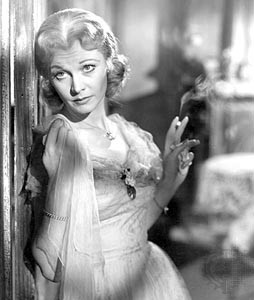Len Gutman's Blog, page 15
July 15, 2012
AFI #40: The Sound of Music
 Sixty movies into this journey of watching all of the AFI’s top 100 American movies in order and if you’ve been reading my posts by now you know I am not a fan of musicals. The good news is, there are only three musicals left on the countdown. The bad news is, I had to try to watch The Sound of Music again — and truth be told I couldn’t take it!
Sixty movies into this journey of watching all of the AFI’s top 100 American movies in order and if you’ve been reading my posts by now you know I am not a fan of musicals. The good news is, there are only three musicals left on the countdown. The bad news is, I had to try to watch The Sound of Music again — and truth be told I couldn’t take it!
I get it. If you like musicals, this is the creme de la creme. Still, there are “modern” musicals like Evita and A Chorus Line, both of which were made into extraordinary films that I loved. I’m very much looking forward to the upcoming film version of Les Miserable. But Rogers and Hammerstein is not my cup of tea. But I don’t disparage you for liking them and I certainly understand the appeal of The Sound of Music. It won Best Picture in 1966 over Dr. Zhivago (another terrible slight by the Oscar voters), but how can you argue with Julie Andrews singing and the Von Trapp kids dancing around like wooden soldiers? 
The song list from this film is truly impressive. The Sound of Music, Edelweiss, Do-Re-Mi, My Favorite Things, Maria, So Long Farewell. Good stuff and probably the greatest collection of musical favorites in a single show. Julie Andrews is wonderful as Maria (although I’m not sure why she always seems to play a nanny)! And the World War II background with the Nazis and the family having to escape Austria is interesting and keeps the film from being a total waste of time (like that other Rogers and Hammerstein trash including Oklahoma, Carousel, South Pacific, et al). I know – sacrilege! Look, I’m just being honest. I don’t care for schmaltz.
Very excited to move on to the next few films on the list. Next up: Dr. Strangelove
Filed under: AFI Top 100


June 29, 2012
AFI #41: King Kong
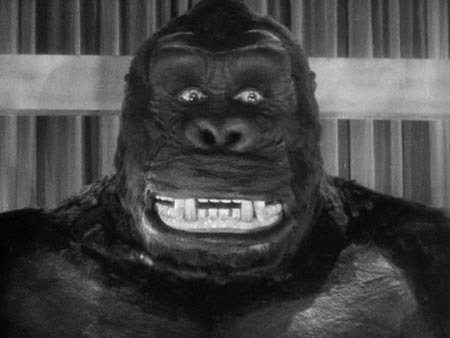 I suppose the best thing I can say about the original King Kong is that it’s pretty impressive for a film made in 1933. Clearly the film can’t hold a candle to today’s epic special effects driven mega movies, but as I was watching it I imagined what it may have been like for an audience member to see this film on the big screen back in the 30s and it was probably pretty darn impressive. I doubt anyone thought the creatures looked real, but the size and scale must have been something to behold.
I suppose the best thing I can say about the original King Kong is that it’s pretty impressive for a film made in 1933. Clearly the film can’t hold a candle to today’s epic special effects driven mega movies, but as I was watching it I imagined what it may have been like for an audience member to see this film on the big screen back in the 30s and it was probably pretty darn impressive. I doubt anyone thought the creatures looked real, but the size and scale must have been something to behold.
The plot, however, is flat-out ridiculous and the acting is the scariest thing in the film. I’m sorry if you think this film is some sort of landmark motion picture, but it’s just silly. A giant killer gorilla lives on an island in the Pacific along with dinosaurs and aboriginals who sacrifice young ladies to the beast? As Seth Meyers would say — really? And then after the great ape kills half the crew they capture it and bring it back to New York where it escapes, grabs the girl and climbs up the Empire State Building only to be shot down by bi-planes? Really? And then the moral of the story is that it was beauty that killed the beast. Really?
Truly the most memorable thing about King Kong is actress Faye Wray’s screams. That and the scene where Kong battles a giant T-Rex to the death and wins by snapping the dinosaurs mouth open. Nice. Undoubtedly this film gave the Japanese the inspiration for Godzilla Vs. Mothra!
Next up: The Sound of Music
Filed under: AFI Top 100








June 24, 2012
AFI #42: Bonnie & Clyde
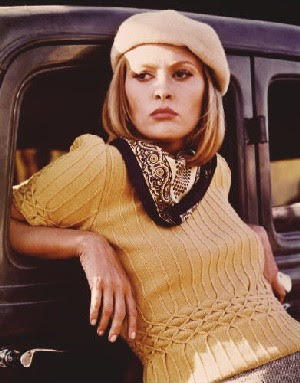 Bonnie & Clyde tells the supposedly true story of Bonnie Parker and Clyde Barrow, a couple of notorious criminals who stormed across the southwest in the 1930s robbing banks and killing cops. If we are to believe the script, Clyde had just gotten out of jail for armed robbery when he met a bored Texas waitress named Bonnie Parker who was looking for adventure. Well, she got it and a whole lot more. I was struck by several aspects of this story, the first being that they didn’t seem to have any plan or frankly any reason other than the thrill to rob banks. On top of that, they were really reckless and bragged about their exploits to anyone who would listen — almost assuring they’d get caught.
Bonnie & Clyde tells the supposedly true story of Bonnie Parker and Clyde Barrow, a couple of notorious criminals who stormed across the southwest in the 1930s robbing banks and killing cops. If we are to believe the script, Clyde had just gotten out of jail for armed robbery when he met a bored Texas waitress named Bonnie Parker who was looking for adventure. Well, she got it and a whole lot more. I was struck by several aspects of this story, the first being that they didn’t seem to have any plan or frankly any reason other than the thrill to rob banks. On top of that, they were really reckless and bragged about their exploits to anyone who would listen — almost assuring they’d get caught.
I thought the story was boring and pointless and I didn’t really like the film. I will say though that I thought Faye Dunaway was great (as she seems to be in everything she is in) and Beatty played a whacked out Clyde who if he was really that nuts was a definite sociopath. The film was nominated for tons of Oscars but only won two — one for cinematography and one for best supporting actress for a very annoying Estelle Parsons as Clyde’s sister-in-law Blanche. I actually really liked the performance of Michael Pollard as C.W. Moss and you can still find him in bit roles in tons of Hollywood films today.
If the point was to romanticize the legend of Bonnie & Clyde they did a lousy job. There was nothing romantic about this gang of losers robbing banks and getting shot to death.
Next Up: King Kong
Filed under: AFI Top 100








June 19, 2012
AFI # 43: Midnight Cowboy
Everybody’s talking at me
I don’t hear a word they’re saying
Only the echoes of my mind
 Midnight Cowboy is one of those films that people seems to either love or hate. You can count me among those who really like it. It was certainly controversial at the time it came out, earning an “X” rating from the MPAA for sexual content and adult themes, but it’s tame by today’s standards. It is, of course, known for being the only X rated film to win the Academy Award for Best Picture and one of only two ever nominated in any category (ironically, the other, A Clockwork Orange, is also on the AFI Top 100).
Midnight Cowboy is one of those films that people seems to either love or hate. You can count me among those who really like it. It was certainly controversial at the time it came out, earning an “X” rating from the MPAA for sexual content and adult themes, but it’s tame by today’s standards. It is, of course, known for being the only X rated film to win the Academy Award for Best Picture and one of only two ever nominated in any category (ironically, the other, A Clockwork Orange, is also on the AFI Top 100).
The film is the sordid tale of would-be “hustler” Joe Buck (Jon Voight, AKA Angelina’s dad), fresh off the boat from Texas and trying to earn a living in New York by being a gigalo. He quickly finds out that the naked city is no place for a naive cowboy like him, until he runs into a street urchin and scam artist named Ratso Rizzo (Dustin Hoffman). The two fall in together and try to survive on the streets, but things go from bad to worse. Ultimately it’s a tale of starting over despite the circumstances of ones situation.
For me the film is really driven by the characters of Joe Buck and Ratso Rizzo. Voight and Hoffman both earned Oscar nominations for their work, and both characters have become archetypes of sorts and prove that a film can be held together solely on the strength of characters. Ratso is certainly a legendary character that has been spoofed and copied for decades. “I’m walkin’ here!” Truthfully though I think Voight’s Joe Buck is a more compelling and interesting character — we learn from flashbacks about his difficult childhood and perhaps what led him to leave Texas for New York and a chance at the big time. And of course ultimately it’s his story and he is the one who grows and changes by the end. Speaking of the end — spoiler alert — a lot of people complain about the depressing ending of this film but the ending is a new beginning for Joe Buck and the viewer has to think the experiences he had in New York will lead him to a better life…and we see signs of that along the bus ride to Florida and at the end. Joe is a survivor and you feel like he’s going to be OK.
The other thing about Midnight Cowboy that is pretty compelling is the way in which it was shot, with the flashbacks and the 60s psychedelic stuff. It’s the same treatment I hated in other films of this era but it works nicely here and adds to the flavor of the film as a period piece. Finally, a word about the song. That ever-present Everybody’s Talkin’ At Me. It’s hard to think of another song that always brings to mind the film from which it is associated. But to a person if you say the words Midnight Cowboy people start to sing the song and vice verse if you sing the song people will have visions of Ratso Rizzo and Joe Buck. That’s hard to do. Ironically, the song did not win the Oscar — it didn’t even get nominated. That award went to Raindrops Keep Falling on My Head from Butch Cassidy and the Sundance Kid, which is another song that has become synonymous with a film. And by the way, Butch and Sundance was also nominated for Best Picture that year and lost to Midnight Cowboy, a travesty in my humble opinion.
One last nugget of film lore. In the famous scene in Midnight Cowboy where Joe Buck allows a young man to perform oral sex on him in a theater in exchange for money, that young man was played by a 24-year-old Bob Balaban in his first movie role. Balaban, for film connoisseurs, is of course the brilliant character actor known for his roles in the great Christopher Guest films like A Mighty Wind and Best in Show and…of course…as Russell Dalrymple on Seinfeld!
Next Up: Bonnie & Clyde
Filed under: AFI Top 100, Film








June 10, 2012
AFI #44: The Philadelphia Story
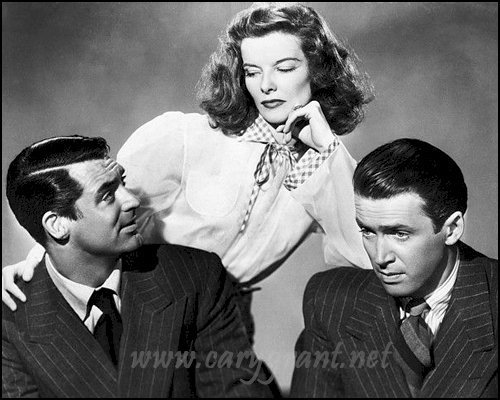 We should begin this review with a caveat: The Philadelphia Story is one of my favorite films of all time. For me, it has everything you want in a great film. First and foremost, the dialogue is superb. In fact, given it was written in 1940 I would argue the screenplay is ahead of its time for its wit, innuendo and double entendre. The story is based on the Broadway play by Philip Barry but the adaptation work by Donald Ogden Stewart and the delivery by the first-rate cast makes it stand out.
We should begin this review with a caveat: The Philadelphia Story is one of my favorite films of all time. For me, it has everything you want in a great film. First and foremost, the dialogue is superb. In fact, given it was written in 1940 I would argue the screenplay is ahead of its time for its wit, innuendo and double entendre. The story is based on the Broadway play by Philip Barry but the adaptation work by Donald Ogden Stewart and the delivery by the first-rate cast makes it stand out.
The story itself is witty and interesting. For those of you who have not seen it, the story revolves around a socialite family from Philadelphia. The upper crust Tracy Lord (Katherine Hepburn) is about to be married to the hard working and virtuous George Kittredge. However, Tracy’s first husband, C.K. Dexter Haven (Cary Grant) shows up at the family estate the day before the wedding with a couple of undercover reporters from Spy Magazine (think TMZ) (Macaulay Connor played by James Stewart and Liz Imbrie played by Ruth Hussey) who think they are there to cover the social event of the season but are in fact there at Haven’s bidding in trade for the magazine not publishing a salacious story about the family’s patriarch. The Lord family catches wind of the plot and decides to play it up for the reporters, but of course nothing goes as planned and a drunken wedding eve leads to unexpected resolutions, declarations of love and ultimately a happy Hollywood ending.
The film appeals to me on so many levels. To begin, Hepburn has never been more beautiful and funny. Tracy is a woman who has always been thought of as cold and aloof, a “trophy” to be admired and put on a pedestal. But all she really wants is to be loved for who she is. Marrying George is obviously the wrong thing to do, but it takes her ex husband and a romantic writer to help her see how to get what she really wants. Grant is dry and sarcastic as Dexter, who is still in love with Tracy and is there not so much to win her back from George but to protect the Lord family from the ruthless media because he doesn’t want any of them to be hurt. And then there is Jimmy Stewart’s Connor, for which he won an Oscar for Best Actor. Mike Connor hates his job at the magazine because he is a “real” writer but he needs to pay the bills. He goes to the wedding thinking it will be a typical snooty society event but he finds the Lord family is down to earth and of course Tracy is both intelligent and loving and he falls head over heels for her. The scenes in which Stewart and Hepburn are drunk are some of the funniest scenes ever filmed.
As a former journalist I love the character of Macaulay Connor. In fact, he is one of my favorite movie characters ever and one of the reasons for my son’s name (don’t tell Leslie our boy is named after this character because she’ll deny it but it was definitely in my mind as we decided on the name Connor). Stewart is remembered for other great roles including Harvey, Mr. Smith Goes to Washington, It’s a Wonderful Life and Rear Window, but he only won one Academy Award and it was for playing Macaulay Connor!
The smaller roles also make this film so wonderful. Tracy’s little sister Dinah, played by 14-year-old Virginia Weidler is hysterical, as is Roland Young’s Uncle Willie. Tracy’s mother Margaret, played deadpan by Mary Nash, is clueless to the goings on and delivers some of the films most memorable lines.
I have seen The Philadelphia Story perhaps a dozen times or more and whenever it’s on TV I stop to watch. It’s truly one of Hollywood’s greatest romantic comedies.
Next on the list: Midnight Cowboy
Filed under: AFI Top 100








June 3, 2012
AFI #45: Shane
“A man has to be what he is, Joey. You can’t break the mold.”
Shane is a 1953 western starring Alan Ladd, a film about a “retired” gunslinger who moseys into a town in need of a hero. The film is a classic western with a story as old as time. Shane shows up in a beautiful Wyoming valley where homesteaders are being run off their land by a bully of a rancher. The bully is even willing to resort to violence to clear the land of the “sodbusters,” but he doesn’t know that Shane is quick on the draw and not afraid of anyone. Of course the film leads up to the ultimate confrontation when Shane has to decide if he’s truly done gunslinging or whether he should use his skills to free the homesteaders from the tyranny of the rancher.
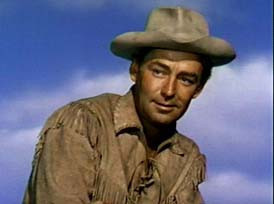 As you might guess from the quote above, Shane finds out that a man’s nature isn’t easy to change. And that is the lesson of the film, that and folks need to stand up for themselves against a bully. The western is the perfect genre for this message and I bet this theme can be found in a great many westerns. The old west is where people are independent and can make their own way through hard work and determination. In fact, the western is a truly American genre because America itself stands for this kind of rugged independence. In this story its man against a bully, but you can find similar stories of man versus nature or man versus himself.
As you might guess from the quote above, Shane finds out that a man’s nature isn’t easy to change. And that is the lesson of the film, that and folks need to stand up for themselves against a bully. The western is the perfect genre for this message and I bet this theme can be found in a great many westerns. The old west is where people are independent and can make their own way through hard work and determination. In fact, the western is a truly American genre because America itself stands for this kind of rugged independence. In this story its man against a bully, but you can find similar stories of man versus nature or man versus himself.
I love a good western and Shane certainly qualifies. It was nominated for a Best Picture Oscar and several of the stars were nominated for acting including Jack Palance and 11-year-old Brandon De Wilde who plays young Joey who looks up to Shane as a hero. de Wilde is actually a terrible actor in the film, so much so that you want to slap his for his over-the-top portrayal. But this was 1953 and I suppose it was rare back then for a kid to have such a meaningful role in a film. But the kid drove me crazy with his constant questioning of Shane and of course his famous cried for Shane to “come back” at the end. Yes, it’s another one of those movie moments that left an indelible stain on our collective movie-going psyche.
The other major flaw of the film is that Ladd as a tough guy is just silly. Ladd is a skinny little five-foot-six-inch tall guy and there’s no way he could beat the rough and tumble cowboys in fights, yet he does so with ease in the film. Please! But at least he didn’t take himself too seriously. He was quoted as saying: “I have the face of an aging choirboy and the build of an undernourished featherweight. If you can figure out my success on the screen you’re a better man than I.”
Next up: One of my all-time favorite films: The Philadelphia Story
Filed under: AFI Top 100








May 24, 2012
You Are What You Eat
 Long before I suffered a heart attack I had been thinking a lot about food and its relationship to health. I had good reason to learn more about food as my cholesterol, triglycerides and blood sugar were elevated due to a combination of genetics, inconsistent activity levels and an undying love of pizza. So I started doing research on how to naturally lower these signs of impending crisis and each time the path led back to the same place — food.
Long before I suffered a heart attack I had been thinking a lot about food and its relationship to health. I had good reason to learn more about food as my cholesterol, triglycerides and blood sugar were elevated due to a combination of genetics, inconsistent activity levels and an undying love of pizza. So I started doing research on how to naturally lower these signs of impending crisis and each time the path led back to the same place — food.
Flash forward to last night and here I am again watching a documentary about food and health, this time at a special screening of Fat, Sick and Nearly Dead at a local restaurant called Pomegranate Cafe. And just like all the others, the premise involves eating fruits and veggies. Hmm. Maybe it’s true that 50 million Elvis fans can’t be wrong.
Here are just some of the films I’ve seen and books I’ve read over the past few years that preach the gospel of healthy eating:
Food Inc.
Forks Over Knives
Super Size Me
The Future of Food
Fast Food Nation
The Omnivore’s Dilemma
In Defense of Food
The Weight of the Nation
I’m sure you can find tons more, but these are some of the popular ones. The thing is, so much research (both scientific and anecdotal) points to the plain fact that food can make us sick and conversely food can heal. You don’t have to believe it, or even care, but that doesn’t make it not true. What would it take for you to change the way you eat?
What of you had a heart attack? Would you change the way you eat, or would you continue the unhealthy lifestyle that made you susceptible to heart disease in the first place? It’s not an easy answer. In the months since my heart attack I have run into all types of survivors — those who don’t change because they either don’t care about living or they think it’s too hard to those, like me, who are willing to make a radical change in hopes of not only living longer but being healthy enough to enjoy that longevity. For me it’s a no brainer, but I understand the other side.
Changing my diet was really hard at first, and not just because I missed regularly having a couple of slices at NYPD Pizza. The hardest part has been eating at restaurants. I’ll tell you what’s not hard — eliminating most animal products. I have been mostly vegetarian for years (I continue to enjoy seafood) and truthfully I don’t miss the meat. Yes, every once in a while I dream about a Double Double, but it passes and those cravings happen less and less. I’m even thinking being vegan or raw wouldn’t be too hard since I’m almost there already. Limiting fat and cholesterol is simple, especially if you eat mostly vegetarian anyway.
Unfortunately for me, my heart was damaged by my heart attack and if I want to take care of it — permanently — I need to severely limit sodium. This has been the hardest thing for me, and not because I crave the taste. It’s hard because sodium is everywhere and often in places you least expect it. I won’t go into detail on why sodium is so bad for heart patients, but suffice it to say sodium makes you retain water and retaining water makes your heart pump harder. When your heart pumps harder, it will naturally enlarge and that would exacerbate my damage and inevitably lead to heart failure. How much sodium are we supposed to eat? The recommended daily allowance for a healthy person is 2500 mg. For someone like me, I need to stay under 1500 mg. I am currently eating between 1000-1500 mg per day. To give you an idea of what that means, a single teaspoon of table salt? There is around 2500 mg in a teaspoon of salt. A typical slice of pizza? 700 mg. How about a “healthy” meal at a “healthy” restaurant? A small Greek salad at Pita Jungle has 940 mg of sodium.
So you can see eating at restaurants is a challenge for me. But it’s worth the hassle given my condition. If you don’t have a heart condition, changing your diet is a breeze. But even keeping to the RDA is tough for a healthy person. A single portion of lasagna classico at Olive Garden contains 2830 mg of sodium. Holy salt lick Batman!
Why wouldn’t you change your diet? It’s so easy and the evidence is so clear. I know, you love a good steak. Enjoy, but why not consider making small steps in the right direction? Michael Pollen says it best. When asked how to dig through all the hype and misinformation he says, simply:
Eat food. Not too much. Mostly plants.
In case you’re confused, by suggesting we “eat food” he’s basically saying to eliminate anything processed, chemical, manufactured, toxic, etc. Broccoli is food. Methylchloroisothiazolinone is not.
Filed under: Heart








May 20, 2012
AFI #46: It Happened One Night
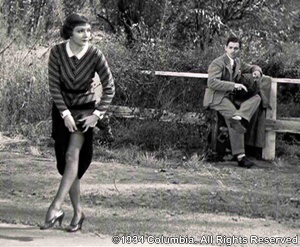 I’m going to skip watching It Happened One Night for this exercise because truth be known I have already seen it twice in the past few months. I originally rented it because I had always wanted to see the first film that took home Academy Awards for all five major categories — Best Picture, Best Actor, Best Actress, Best Screenplay and Best Director. It did not disappoint and a few months later I watched it again when I ran across it on cable.
I’m going to skip watching It Happened One Night for this exercise because truth be known I have already seen it twice in the past few months. I originally rented it because I had always wanted to see the first film that took home Academy Awards for all five major categories — Best Picture, Best Actor, Best Actress, Best Screenplay and Best Director. It did not disappoint and a few months later I watched it again when I ran across it on cable.
Its films like this that remind me that just because a film is old does not mean it’s not contemporary. It Happened One Night came out in 1935 but the writing is witty and modern — it must have been something special in 1935! I love this film, especially the work by Clark Gable and Claudette Colbert. Gable won his only Oscar for his role as newspaper reporter Peter Warne, who stumbles upon a great story and ends up finding love. Colbert is the sharp-witted heiress who he finds running away from her father. The on-screen chemistry between the pair is magnificent and the dialogue is ahead of its time.
You could easily argue that It Happened One Night is the forefather of the modern-day romantic comedy. It has everything you like in a RomCom including the sexual tension, something that must have been unique in the 1930s. It’s a great film and I recommend it to anyone who likes romantic comedies (I admit it, I’m a sucker for a good one!)
Next Up: Shane
Filed under: AFI Top 100








AFI # 47: A Streetcar Named Desire
A Streetcar Named Desire is one of those films I’ve always heard about but never saw. And of course, the famous scene with Marlon Brando screaming for his wife Stella has become a meme and a staple of any Hollywood montage sequence. I also must admit I have never read any Tennessee Williams plays nor have I seen any other films based on Tennessee Williams writing, so I’m not expert on the guy or his genre. My guess is that the play was better than the film and the written work was better than the play. I say this because the screenplay is clearly the highlight of the film and as if you need any proof the acting ensemble all took home Oscars or Oscar nominations — good writing!
Let’s get this out of the way first — I really didn’t like the film. In fact, I fell asleep for a few minutes in the middle of the damn thing. But I did like the acting and the screenplay. Vivian Leigh was amazing as Blanche DuBois and it seemed as if the part was written for her. For anyone who thought her turn as Scarlett O’Hara in Gone With the Wind was a clinic on overacting, she certainly redeemed herself 12 years later as DuBois. She won the Oscar for both, but without question her portrayal of DuBois was a tour de force. It’s never easy to play someone who is mentally ill without going over the top, but in this role she slowly starts to come apart from the beginning of the film until she completely loses it by the end. Brilliant work. Karl Malden was also very good as poor Mitch who falls for Blanche and watches as she comes undone. It’s funny how we think of an actor like Karl Malden for one particular role (for me Karl will always be Detective Mike Stone from The Streets of San Francisco) but he has quite a film career prior to his television success. Malden won the Oscar for Best Supporting Actor for this film and was nominated again a few years later for On The Waterfront. Kim Hunter was also nominated for an Oscar, for her role as Stella. I had no idea who she was until I looked her up on IMDB and found out she made a name for herself as Zira in The Planet of the Apes series!
And then there was Marlon Brando. What can we say about Mr. Brando? The man was nominated eight times for an Academy Award and won twice (for On The Waterfront and The Godfather). He was nominated for his role in this film as the brutish Stanley Kowalski and frankly I could barely understand a fucking word he said. What is it with this guy? Why is a guy who mumbles like this considered such a great actor? I don’t get it. He’s the film equivalent of Bob Dylan (the greatest mumbler of all time). I get that he’s a method actor who gets into the head of his characters, but why the hell can’t he annunciate? Whatever.
Maybe I’m just not a Tennessee Williams fan. We’ll see as he gets another shot later in the AFI list.
Next: It Happened One Night
Filed under: AFI Top 100








May 19, 2012
AFI #48: Rear Window
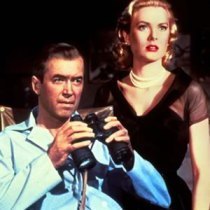 The second Alfred Hitchcock film so far on the AFI Top 100, Rear Window stars Jimmy Stewart as a professional photographer who is laid up with a broken leg with nothing to do but spy on his neighbors out his window. When he thinks his a neighbor has killed his wife he tries to put together the story along with his girlfriend, his nurse and a detective friend. The result is really less of a suspense film and more of a commentary on society.
The second Alfred Hitchcock film so far on the AFI Top 100, Rear Window stars Jimmy Stewart as a professional photographer who is laid up with a broken leg with nothing to do but spy on his neighbors out his window. When he thinks his a neighbor has killed his wife he tries to put together the story along with his girlfriend, his nurse and a detective friend. The result is really less of a suspense film and more of a commentary on society.
In terms of suspense the film is a little slow and not nearly as action packed as other Hitchcock films like Psycho, North By Northwest or The Birds. But I enjoyed it for its statement about human nature. Stewart’s character Jeff watches over his neighborhood and judges each neighbor. There is “Miss Lonelyhearts” who dines with imaginary friends, and the songwriter who struggles with his art but throws parties with lots of people. There are the newlyweds and of course “Miss Torso” who dances around in her underwear and appears to have many men chasing after her. But of course Jeff becomes obsessed with the salesman, Mr. Thorwald, who slaves over his ill wife until one strange night she seems to have disappeared. Jeff watches Thorwald’s strange behavior and rushes to the judgement that he has killed his wife.
Frankly I’m not sure why Rear Window is considered a great film by so many, including the AFI. Aside from the interesting characters in the apartment complex it’s a pretty silly film, especially the end in which Thorwald goes a little crazy. The whole premise that Thorwald would kill his wife with the shades open and then continue to prance about his apartment packing up her belongings is far-fetched. So too is his reaction when Jeff lets him know that he is on to his scheme. Thorwald’s behavior is so unbelievable that it borders on ridiculous.
On the other hand, Jimmy Stewart does a nice job as Jeff. His character has the best lines (along with the sharp-witted nurse). On top of that, any film with the gorgeous Grace Kelly is worth watching. Still, Jeff doesn’t seem to want to marry Grace so he’s really not that bright after all.
Next Up: A Streetcar Named Desire
Filed under: AFI Top 100









